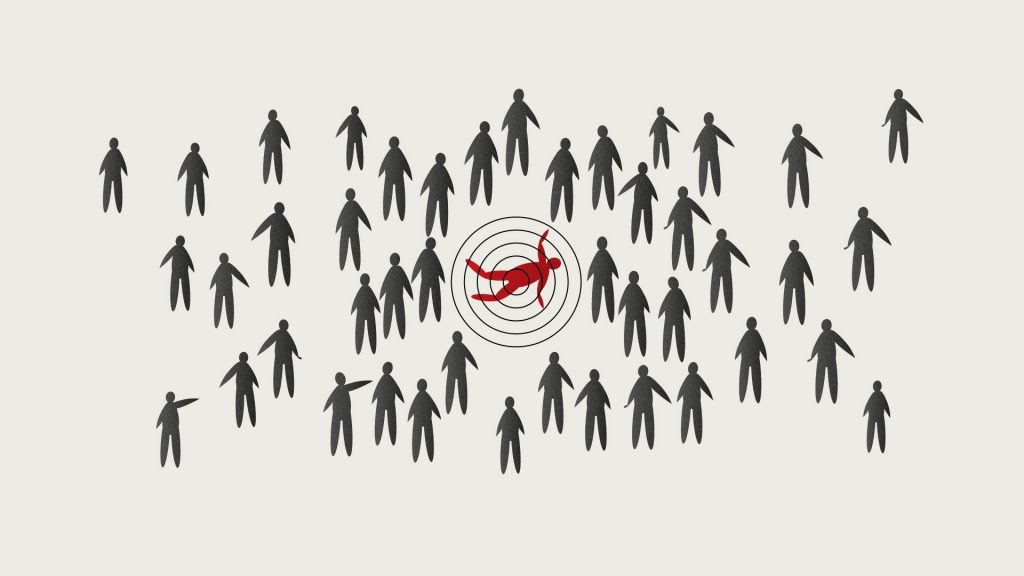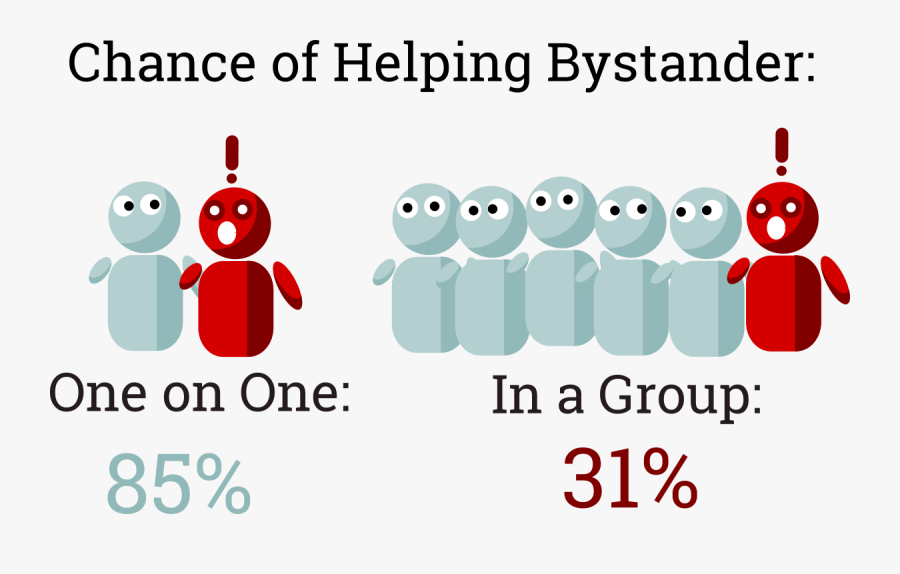“It takes nothing to join the crowd. It takes everything to stand alone”. Very few people actually have the courage to stand out or stand alone and take the road less travelled. The majority take the easier path of blindly following the crowd. In most cases, this is a decision that one takes unconsciously as the phenomenon is deeply engraved in our sub-conscious.

To put things in perspective for this article, Bystander is a person who is present as a witness in a situation or event but does not take part in it. It is true that we all become a bystander, willingly or unwillingly, consciously or unconsciously in cases around us each day. Bystander effect is a very common chain of effect that occurs in every society. It refers to a phenomenon in which the number of people present at an incident is inversely proportional to the likelihood of anyone helping a person in distress. When an emergency occurs, observers are more likely to take action if there are few or no other witnesses at the site of emergency. A classic and common example of bystander effect is where witnesses of a road accident are much less likely to offer help to the victim if there are many other people present on location. Whereas, if there is no one around, one would stop and try to do something about it. Basically, a bystander is less likely to extend help when he or she is in the real or imagined presence of others than when he or she is alone.

The word “help” is a very simple yet complicated word. To help is to do something that makes it easier for someone to do a job, to deal with a problem, or to aid or assist someone. Helping someone sounds like an easy job, and most of us would agree that we would help people anytime anywhere, but it always doesn’t always turn out that way. The root cause of bystander effect is the lack of responsibility one feels when he/she sees too many people around. The need to go out and extend help or provide assistance is not felt due to the presence of multiple other people. Numerous studies and experiments to verify the nature of helpfulness and hence the bystander effect show that there are various factors that affect ones’ will to help someone. For example, gender plays a role. It is seen that women are more likely to assist in situations like picking up fallen items than in situations involving drunk men. There is also the situation where one tells himself/herself that one of the other present people will surely assist and my help is not required. Such tendencies in almost everyone leads to the unconscious continuation of the bystander effect.

The important question now is, “What can be done to decrease the influence bystander effect?” Firstly, its important to have knowledge, skill and confidence to deal with an emergency situation. Secondly, the behaviour of helping others selflessly should be encouraged so that its seen and developed as a healthy habit. Thirdly, quick decision making in times of need should be preached and practiced, allowing spontaneous action. Lastly, the capacity to identify risk factors should be developed, as that will help in grasping the intensity of the problem and the correct handling of the situation.

Sources:
https://www.tandfonline.com/doi/abs/10.1207/s15327809jls1302_2
https://psycnet.apa.org/buy/2011-08829-001?mod=article_inline
https://www.ipl.org/essay/The-Pros-And-Cons-Of-The-Bystander-F36Z336CED6

Umani Agarwal recently finished her graduation from Delhi University, in psychology and sociology. She is in-charge for community development in IIBP.

